- Home
- Неизвестный
T Thorn Coyle Evolutionary Witchcraft (pdf)
T Thorn Coyle Evolutionary Witchcraft (pdf) Read online
•
��tio�
�0
Q�
�
�
�-
"'"chcJ0
T. Thorn covle
Most Tarcher/Penguin books are available at special quantity discounts for
bulk purchase for sales promotions, premiums, fund- raising, and educational
needs. Special books or book excerpts also can be created to fit specific needs.
For details, write Penguin Group (USA) Inc. Special Markets, 375 Hudson
Street, New York, NY IOOI4.
While the author has made every effort to provide accurate telephone numbers and Internet addresses at the time of publication, neither the publisher nor the author assumes any responsibility for errors, or for changes that occur after
publication.
Jeremy P. Tarcher/Penguin
a member of
Penguin Group (USA) Inc.
375 Hudson Street
New York, NY IOOI4
www.penguin.com
Copyright © 2004 by T. Thorn Coyle
All rights reserved. No part of this book may be reproduced, scanned,
or distributed in any printed or electronic form without permission. Please do
not participate in or encourage piracy of copyrighted materials in violation
of the author's rights. Purchase only authorized editions.
Published simultaneously in Canada
Library of Congress Cataloging-in-Publication Data
Coyle, T. Thorn, date.
Evolutionary witchcraft / T. Thorn Coyle.
p. em.
Includes bibliographical references and index.
ISBN I -58542-347-5
I. Witchcraft. I. Title
BFI57l.C69
2004
20040480I9
I33.4'3--dc22
Printed in the United States of America
3 5 7 9 IO 8 6 4 2
This book is printed on acid-free paper. IS
Book dtsign by Mtighan Cavanaugh
Inttrior photographs by Mark l.tialoha
contents
Acknowledgments
ix
The Roots of Bvolutiona.fv witchcfa.ft
I.
The sa.cfed sphefe: ca.stincs with Fefi Fife
15
<:..
mvoca.tion: Recocsnizincs the nivine within 43
3·
Ba.st: openincs the senses
75
4·
south: Bncsa.csincs the Fla.me
105
5·
.
.
.
.
west: mvmcs mto compa.ssiOn
149
6.
North: Birthin� our wholeness
183
7·
powers Above: Risin� und oreumin� 201
8.
powers Below: Li�htin� the oudmess 229
g.
center: openin� the gutes 249
IO.
suued sphere: closin� the sphere,
openin� the world m
Appendix: Readings and Resources
289
Index
295
Acknowled
I am eternally gratefUl to Victor and Cora Anderson for passing this work
along to us, and to Cora for giving her blessing to this book and my teaching. I
thank all of my other teachers in both Feri and its offshoot, Reclaiming.
Thanks to my co-priests and peers, including anaar, Tom, Willow, Oak, Anne,
and many others, and to all of my students, friends, and supporters-especially
Dawn, Lilith, and Scott-with whom I have explored this winding road, this
third way, this path beginning in the middle. Thanks always to Jim for amazing
support and to Reya for stellar friendship. Thanks to Painted Fan for the dancing and to all who inspire and aid my ongoing spiritual formation.
I am grateful for my agent, Tom Grady, who loved this project from the getgo. Thanks to editor and fellow seeker Mitch Horowitz, to Joel Fotinos, Ken Siman, Ashley Shelby, and everyone else at Tarcher who worked so hard to put
this book out. Surf's Up Scribblers-Cynthia, George, Cookie, Mary, and
Susan-keep writing. Thanks to Valerie for graphics help and Mark and
Charles for photos. Thanks too, to all the bookstores that keep me well informed and entertained, especially to Alan, Jude, and everyone else at Border- .
x
Acknowledcsments
lands for stalwart support, and to Fields and Stacey's for gladly answering my
questions and taking my money.
Feri Tradition has many lineages, each formed by the practitioner or teacher.
There is no single way, for the road lies deep within us. I hope you find the journey as miraculous as I do.
In gratitude-T. Thorn Coyle
•
��tio�
�0
�
w
�
�-
�
-�'1-chcr0
The Roots of
Bvolutionurv witchcraft
Po ur some whiskey on holy ground.
Pull a jew weeds.
Listen to the m usic of aching love.
Look at the green in my own front yard.
Dream. Wilit.
Sink into the white tub filled with incense and warm water.
They are comingjor me . . .
Ridingjast and gathering.
Cloaks jlyin & they call out my n ame.
My teacher, Victor Anderson, once told me that the Craft came out of human suffering. My own suffering certainly brought me to Witchcraft and seeking to find the sources of my strength has kept me there. In Witchcraft, I found my place in Nature, and in Nature, I found my connection to all things. In the Feri1 Witchcraft Tradition, I found a way into my own
11 will use the spelling Ftri when speaking of my tradition as passed through Victor and Cora Anderson. The spelling Fatry is used when speaking of beings from the other realms.
2
Evolutiono.cy witchcco.ft
soul and divinity. As I lay in that white claw-footed tub the day of my Feri
initiation, I prepared to commit myself further to my own unfolding and
to take responsibility for my place in the cosmos.
Witchcraft, one of the fastest growing religions in North America and
Australia, is coming into great popularity during a time when humans
need to be responsible, to connect, to find the sacred in our lives right now,
rather than waiting for a day of transcendence and redemption. In a time
of global catastrophe and environmental devastation, a religion that firmly
connects us to the earth is not only understandable but necessary. As Victor said to me in our last conversation before his death, "It is time for people to wake up. You don't play with the fires of creation and get away
with it:' Feri Tradition contains the tools of our awakening.
Modern Witchcraft (known popularly as Wicca) was unearthed, recreated or founded-depending upon your opinion-in England in the I 940s by Gerald Gardner. Gardner was heir to ceremonial groups such as
the Golden Dawn, founded by Moina and MacGregor Mathers, and the
Ordo Templi Orientis as reformed by Aleister Crowley. Other influences
included British folk societies, naturist groups, and, to the best of our knowledge, some actual Witches. Striving to connect the individual to the cycle
s of nature, Witchcraft, as passed on by Gardner and his liturgist Doreen
Valiente, stressed seasonal ritual and a celebration of the Gods of growth
and sexuality, rather than the Gods of science and industry, and fostered a
kinship with natural forces, rather than attempting to control them.
American spiritual practices weaving folk magic, root doctoring, and
Witchcraft were already in existence at the time that Gardner made his work
public in the 1950s. And as British historian Ronald Hutton writes, Feri
Tradition is "one of the home-grown American strains of pagan witchcraft."2 Founded more than fifty-five years ago by Victor and Cora Ander-lRonald Hutton, Triumph if thr Moo11: A History if Modrrn Paga11 Witrhmift (Oxford University Prrss,
I ')'N).
The Roots of Bvolutionun; witchcraft
son, Feri Tradition-though now marked by some influences from British
Traditional Wicca-has its roots in the Americas. Victor was a rnt>mber of
the Harpy Coven in Oregon in the I930s, having first been trained in
magic as a child in New Mexico. Cora's training was in Ozark folk and root
magic, inherited from her grandfather and strengthened by her own psychic
skills, connection to the Faery folk, and her innate house-magic ingenuity.
Like Wicca, Feri Tradition Witchcraft finds connections to the Gods
and Nature, but its emphasis is placed firmly on the alignment of the individual practitioner's soul, and the growth of her power over time, rather than on seasonal celebration. Feri weaves together strands of other contemporary Witchcraft traditions, Victor's own transmission of unique information, the disciplined practice of ceremonial magic, and the wisdom of magical and indigenous spiritual traditions from all parts of the globe.
Add a dash of poetry, stir, and you have Feri.
Though Feri Tradition Witchcraft is not the same as Wicca, some of
our practices and beliefs do overlap. We all honor the sacred elements and
recognize the immanent divine that dwells in the earth, stars, plants, and
in our humanity, if only we can learn to recognize it. But Feri Tradition
also retains a strong flavor of its own and has tools and concepts that are
completely unique.
It is a tradition of varied streams, all of which flow from the practices
of deep communion and self-examination. An ecstatic tradition, it brings
the individual into direct contact with the Gods, Nature, and the sel£ This
contact is often galvanizing, stirring the blood and opening the heart to
the whispering world. It is a tradition concerned with the development and
alignment of the human soul. Its tools help us to walk into an expanded
humanity and an essential divinity. None venture here but the brave-the
poets, warriors, or healers-for this is a life-changing path of power.
Feri is what Victor called a "religion of the human race," and it echoes
the diversity inherent in that statement. Victor felt that the small fey
peoples were the holders of magic all over the world, from Africa, to Eu-
4
Evolutionary witchcraft
rope, to Mexico, to the Polynesian islands. Were these ethereal, magical beings that lived in interstices of space and time or were they actual small humans, like the Picts and Aboriginals? Perhaps they were one or the other or perhaps they were both. Thus begins the poetry and paradox of my tradition. Within paradox lies promise: the promise of Feri Tradition is that we, too, can become fey-seekers of magic, holders of mystery, and communicators of the unspoken. Much of the tradition comes from contact with spirit, which gives a freedom to Feri Tradition, a spontaneity and joy
held in all acts of creation. Human creativity echoes the creative power of
the Star Goddess, the Mother in whom we have our being.
Feri myth tells us the story of the Star Goddess catching her reflection
in the curved black mirror of space. Responding to the beauty of this image, she began to make love to hersel£ From her joy, the Gods were born, and from the joy of the Gods, the worlds were born. The work in this
book can help us catch sight of ourselves, fall in love, and spiral out into
our true lives, shimmering with starlight and grounded on the sacred earth.
We walk into our souls and are changed.
In Feri Tradition, all are equal before the Gods. Our authority is internal, and gained over time, not bestowed on us from without. Differences can arise through the amount of training and experience one has and in
each individual priest or priestess's style of working. Differences also come
&om varying levels of commitment to one's craft, but there is no inherent
hierarchy among initiates, and students are treated with respect. Though
an initiate holds greater responsibility, no teacher has greater access to the
Gods, Guardians, or magic than any student. What matters is integrity and
openness, not tide or entitlement.
Feri also has a queer nature. There is a sense of walking the edges and
in-between spaces, of being all genders and holding all possibilities within
oneself-one can be human and fey, male and female, fragile soul and divim· essence, all at the same time. In looking upon our multiplicity, we find wholt·ncss.
The Roots of E:volutiono.fv witchCfa.ft
These concepts dovetailed into Reclaiming, an offshoot tradition of
Feri. Founded in the late I970s and early I 980s by a group of dedicated
activists, including Pagan writer Starhawk, it has been a highly public tradition, doing large, open rituals, teaching, and engaging in civil disobedience as a spiritual act. Reclaiming took the joy and beauty of Feri, and the emphasis on internal authority and cocreation, and wed these with anarchofeminist politics. It strives to marry social justice, environmental activism, and the shared power of magic or, as its mandate says: "to join spirit and politics:'
My work, Evolutionary Witchcraft, springs from both of these vital
traditions, with some other spiritual strands woven into the tapestry of my
teaching. I began to study the Craft at age sixteen, the year I left the
Catholic Church. This was the year of my first consciously political act,
spray-painting "Reagan Hates Me" on the window of Republican headquarters in my small Southern California town of Whittier. I also embellished a large portrait of said president with alien antennae.
Whittier, which had originated as a peaceful Quaker enclave, had become known as the birthplace of Nixon, and I was smack in the middle, between L.A. and Orange County, wishing to be free. I moved to San
Francisco as soon as I could, and encountered my first Feri teacher there,
at age eighteen, while desperately searching for something in a musty old occult shop on Divisadero Street. I studied with this student of Victor's for a year, wandered awhile on my own, and then dove into Reclaiming, a natural choice for my magical political soul. The earth was alive, Goddess flowed through all things, and I had to act from this knowledge. I became
activist, priestess, and eventually, teacher.
This satisfied me for quite a while. But once I started making deeper
commitments to my Craft and the tradition, undergoing the Reclaiming
initiation that gave me my current name, I began to feel that something
was missing for me. I needed still more depth of commitment to spiritual
practice and intensive work on self than I was finding among my anarchist
6
cuolutionufv witchuuft
community in Reclaiming. The idea of sharing power was valuable and
revolutionary, but I sensed that power needed to be reached from a deeper
level. We cannot
share what we do not truly have and simply saying we have
it does not make it so. I didn't leave Reclaiming, but I went searching. Revolution had put me on a quest toward evolution.
I studied with the Mevlevi Sufis for three years, still doing ritual and
teaching, as I whirled, sweated, and prayed in this holy order founded by the
mystic poet Jalaludin Rumi. I made peace with my Catholic childhood by
observing Lent along the way and living in voluntary poverty with a spiritually eclectic Catholic Worker house that ran a soup kitchen. I studied Christianity, Judaism, and Islam. My experience of the Gods and my identity as a Witch were present in the midst of all of this as I searched for a firmer foundation to support my soul's work. I was struggling to grow into
true responsibility, to be able to respond rather than just doing things out of
duty. I was teaching in Reclaiming, but in my heart I was also searching for
something Reclaiming taught against-the perfect teacher, the perfect way.
While whirling with the dervishes and serving up soup with the
Catholic Worker, I began to study with Victor Anderson, taking notes during hour-long phone conversations or as he hypnotically worked his rocking chair in his small San Leandro living room and Cora fixed me with her penetrating gaze. Later, when Cora was convalescing from a stroke, I visited Victor weekly, to fix him lunch, study, and work magic. My pen and notebook fell away and the magic washed through me in a rush.
Physically, Victor was mostly blind, but with brilliant insight, and he
opened my spirit to the power of Feri Tradition and its tools. Yet he was
not the perfect teacher I sought. He was powerfUl, funny, and wise, and he
was also cranky. Still looking, I joined a group that followed the teachings
of the mystic philosopher G. I. Gurdjieff, already influenced by "the
Work" as his system is called, through years of reading. I learned much of
value in my two years' immersion there, including learning that once again,
I had to leave, though "the Work" would continue to influence me.
The Roots of Bvolutiona.cv witchcca.ft
7
In the midst of these searching years, in February I 996, I received initiation as Priestess and Witch into Feri Tradition itself, passed the power by the Feri initiates in my then coven, Triskets. Feri was tenacious, working in me even as I searched beyond it. Victor and Cora's legacy was holdmg me.

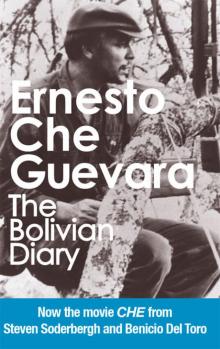 The Bolivian Diary
The Bolivian Diary Caffeine Blues_ Wake Up to the Hidden Dangers of America's #1 Drug ( PDFDrive )
Caffeine Blues_ Wake Up to the Hidden Dangers of America's #1 Drug ( PDFDrive )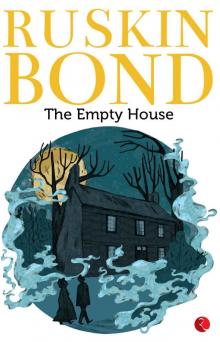 The Empty House
The Empty House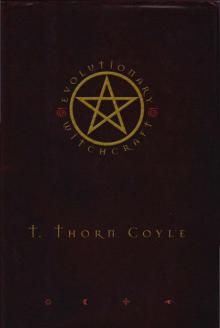 T Thorn Coyle Evolutionary Witchcraft (pdf)
T Thorn Coyle Evolutionary Witchcraft (pdf)![K J Emrick & Kathryn De Winter - [Moonlight Bay Psychic Mystery 01-06] - A Friend in; on the Rocks; Feature Presentation; Manor of; by Chocolate Cake; A-Maze-Ing Death (retail) (epub) Read online](http://freenovelread.comhttps://picture.efrem.net/img/nienyi/k_j_emrick_and_kathryn_de_winter_-_moonlight_bay_psychic_of_by_chocolate_cake_a-maze-ing_death_retail_epub_preview.jpg) K J Emrick & Kathryn De Winter - [Moonlight Bay Psychic Mystery 01-06] - A Friend in; on the Rocks; Feature Presentation; Manor of; by Chocolate Cake; A-Maze-Ing Death (retail) (epub)
K J Emrick & Kathryn De Winter - [Moonlight Bay Psychic Mystery 01-06] - A Friend in; on the Rocks; Feature Presentation; Manor of; by Chocolate Cake; A-Maze-Ing Death (retail) (epub) Next Day of the Condor
Next Day of the Condor Onyx
Onyx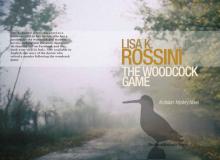 The Woodcock Game: An Italian Mystery Novel
The Woodcock Game: An Italian Mystery Novel Granta 122: Betrayal (Granta: The Magazine of New Writing)
Granta 122: Betrayal (Granta: The Magazine of New Writing)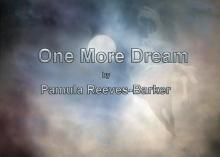 One More Dream
One More Dream Cosa Nostra by Emma Nichols) 16656409 (z-lib.org) (1)-compressed
Cosa Nostra by Emma Nichols) 16656409 (z-lib.org) (1)-compressed Cowboy by J. M. Snyder
Cowboy by J. M. Snyder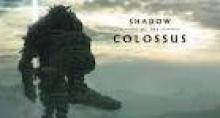 Colossus
Colossus Star Trek - DS9 011 - Devil In The Sky
Star Trek - DS9 011 - Devil In The Sky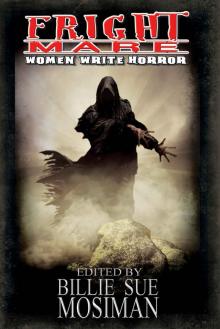 Fright Mare-Women Write Horror
Fright Mare-Women Write Horror The Future Is Japanese
The Future Is Japanese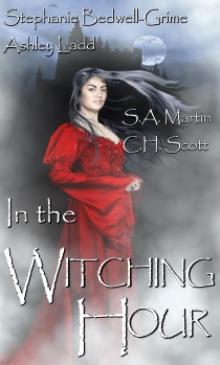 In the Witching Hour
In the Witching Hour Mammoth Books presents Wang's Carpets
Mammoth Books presents Wang's Carpets The Cradle King: The Life of James VI and I, the First Monarch of a United Great Britain
The Cradle King: The Life of James VI and I, the First Monarch of a United Great Britain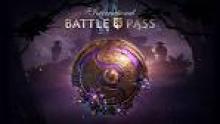 Stalking Moon
Stalking Moon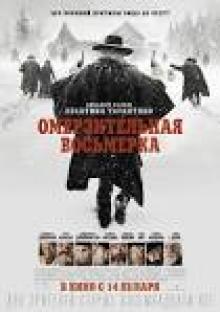 Hostage To The Devil
Hostage To The Devil![Harris, Daisy - Mere Passion [Ocean Shifters 2] (Siren Publishing Classic) Read online](http://i1.bookreadfree.com/i/03/23/harris_daisy_-_mere_passion_ocean_shifters_2_siren_publishing_classic_preview.jpg) Harris, Daisy - Mere Passion [Ocean Shifters 2] (Siren Publishing Classic)
Harris, Daisy - Mere Passion [Ocean Shifters 2] (Siren Publishing Classic) Day, Sunny - Hot in Space (Siren Publishing Ménage and More)
Day, Sunny - Hot in Space (Siren Publishing Ménage and More) Five Books Of The Lives, Heroic Deeds And Sayings Of Gargantua And His Son Pantagruel
Five Books Of The Lives, Heroic Deeds And Sayings Of Gargantua And His Son Pantagruel I Never Thought I'd See You Again: A Novelists Inc. Anthology
I Never Thought I'd See You Again: A Novelists Inc. Anthology Billion dollar baby bargain.txt
Billion dollar baby bargain.txt![Chenery, Marisa - Turquoise Eye of Horus [Egyptian Shifters 1] (Siren Publishing Classic) Read online](http://i1.bookreadfree.com/i1/03/26/chenery_marisa_-_turquoise_eye_of_horus_egyptian_shifters_1_siren_publishing_classic_preview.jpg) Chenery, Marisa - Turquoise Eye of Horus [Egyptian Shifters 1] (Siren Publishing Classic)
Chenery, Marisa - Turquoise Eye of Horus [Egyptian Shifters 1] (Siren Publishing Classic) Cat Magic
Cat Magic Star Trek - DS9 - Warped
Star Trek - DS9 - Warped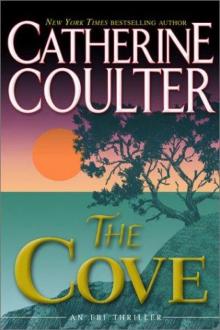 Catherine Coulter - FBI 1 The Cove
Catherine Coulter - FBI 1 The Cove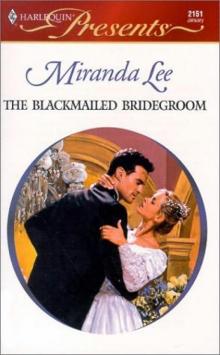 Miranda Lee -The Blackmailed Bridegroom
Miranda Lee -The Blackmailed Bridegroom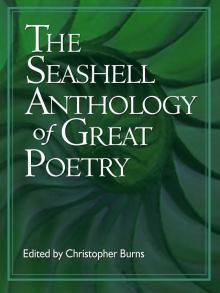 The Seashell Anthology of Great Poetry
The Seashell Anthology of Great Poetry Dragon Moon
Dragon Moon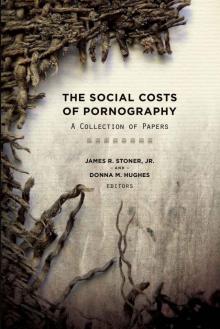 The Social Costs of Pornography: A Collection of Papers
The Social Costs of Pornography: A Collection of Papers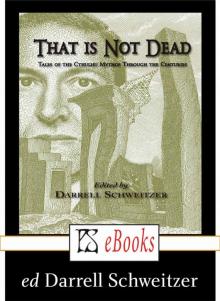 That Is Not Dead
That Is Not Dead Best New Horror: Volume 25 (Mammoth Book of Best New Horror)
Best New Horror: Volume 25 (Mammoth Book of Best New Horror) This Christmas by J. M. Snyder
This Christmas by J. M. Snyder Faerie Cake Dead
Faerie Cake Dead CS-Dante's Twins
CS-Dante's Twins EFD1: Starship Goodwords (EFD Anthology Series from Carrick Publishing)
EFD1: Starship Goodwords (EFD Anthology Series from Carrick Publishing) Echo Burning by Lee Child
Echo Burning by Lee Child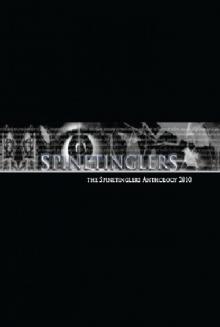 The Spinetinglers Anthology 2010
The Spinetinglers Anthology 2010 Wild Hearts
Wild Hearts Violet Winspear - Sinner ...
Violet Winspear - Sinner ... Broken Angels
Broken Angels FearNoEvil
FearNoEvil![Santiago, Lara - Range War Bride [Tasty Treats 11] (Siren Publishing PolyAmour) Read online](http://i1.bookreadfree.com/i1/03/30/santiago_lara_-_range_war_bride_tasty_treats_11_siren_publishing_polyamour_preview.jpg) Santiago, Lara - Range War Bride [Tasty Treats 11] (Siren Publishing PolyAmour)
Santiago, Lara - Range War Bride [Tasty Treats 11] (Siren Publishing PolyAmour)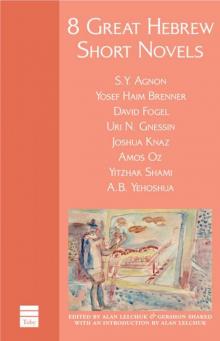 8 Great Hebrew Short Novels
8 Great Hebrew Short Novels This Is How You Die: Stories of the Inscrutable, Infallible, Inescapable Machine of Death
This Is How You Die: Stories of the Inscrutable, Infallible, Inescapable Machine of Death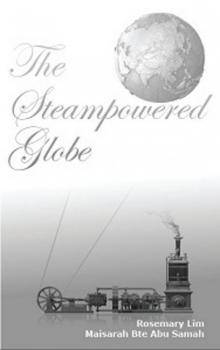 The Steampowered Globe
The Steampowered Globe While We Wait by J. M. Snyder
While We Wait by J. M. Snyder Iron Tongue cr-4
Iron Tongue cr-4![Stieg Larsson [Millennium 02] The Girl Who Played with Fire v5.0 (LIT) Read online](http://i1.bookreadfree.com/i1/03/31/stieg_larsson_millennium_02_the_girl_who_played_with_fire_v5_0_lit_preview.jpg) Stieg Larsson [Millennium 02] The Girl Who Played with Fire v5.0 (LIT)
Stieg Larsson [Millennium 02] The Girl Who Played with Fire v5.0 (LIT)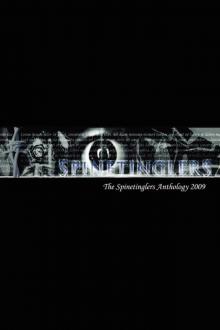 The Spinetinglers Anthology 2009
The Spinetinglers Anthology 2009 Bowles, Jan - Branded by the Texas Rancher (Siren Publishing Classic)
Bowles, Jan - Branded by the Texas Rancher (Siren Publishing Classic) Brown, Berengaria - Vivienne's Vacation (Siren Publishing Ménage and More)
Brown, Berengaria - Vivienne's Vacation (Siren Publishing Ménage and More) Inheritors
Inheritors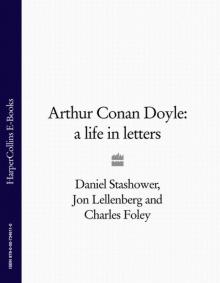 Arthur Conan Doyle: A Life in Letters
Arthur Conan Doyle: A Life in Letters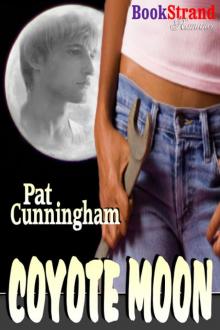 Cunningham, Pat - Coyote Moon (BookStrand Publishing Romance)
Cunningham, Pat - Coyote Moon (BookStrand Publishing Romance) Static Line
Static Line Ghost Mysteries & Sassy Witches (Cozy Mystery Multi-Novel Anthology)
Ghost Mysteries & Sassy Witches (Cozy Mystery Multi-Novel Anthology) Elizabeth Neff Walker - Puppy Love
Elizabeth Neff Walker - Puppy Love Ghosts in the Machine
Ghosts in the Machine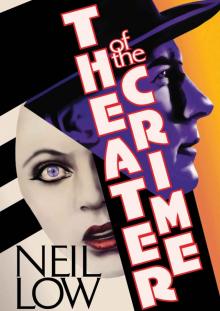 Theater of the Crime (Alan Stewart and Vera Deward Murder Mysteries Book 6)
Theater of the Crime (Alan Stewart and Vera Deward Murder Mysteries Book 6)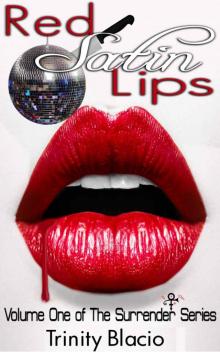 Red Satin Lips, Book One (The Surrender Series)
Red Satin Lips, Book One (The Surrender Series)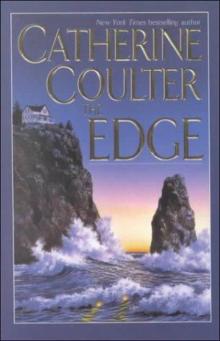 Catherine Coulter - FBI 4 The Edge
Catherine Coulter - FBI 4 The Edge StateoftheUnion
StateoftheUnion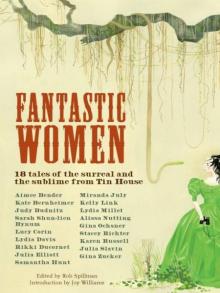 Fantastic Women: 18 Tales of the Surreal and the Sublime from Tin House
Fantastic Women: 18 Tales of the Surreal and the Sublime from Tin House Sara Wood-Expectant Mistress original
Sara Wood-Expectant Mistress original Nine-to-Five Fantasies: Tales of Sex on the Job
Nine-to-Five Fantasies: Tales of Sex on the Job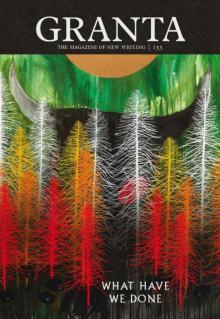 Granta 133
Granta 133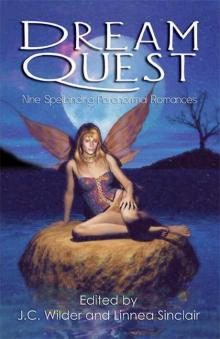 Dream Quest
Dream Quest The Warlock in Spite of Himself wisoh-2
The Warlock in Spite of Himself wisoh-2 Glenn, Stormy - Mating Heat (Siren Publishing Ménage Amour)
Glenn, Stormy - Mating Heat (Siren Publishing Ménage Amour) Davis, Lexie - Toys from Santa (Siren Publishing Classic)
Davis, Lexie - Toys from Santa (Siren Publishing Classic) Once Dead, Twice Shy
Once Dead, Twice Shy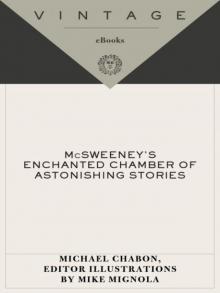 McSweeney's Enchanted Chamber of Astonishing Stories
McSweeney's Enchanted Chamber of Astonishing Stories Zombies: Shambling Through the Ages
Zombies: Shambling Through the Ages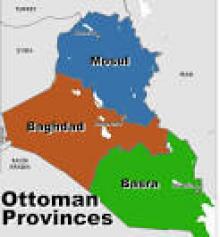 Baghdad Without a Map
Baghdad Without a Map Banshee Cries (the walker papers)
Banshee Cries (the walker papers)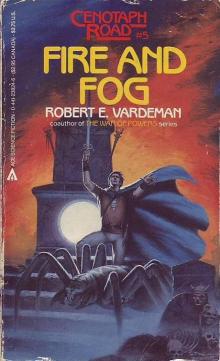 Fire and Fog cr-5
Fire and Fog cr-5 The Twelve Hot Days of Christmas
The Twelve Hot Days of Christmas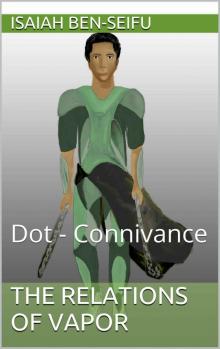 The Relations of Vapor: Dot - Connivance
The Relations of Vapor: Dot - Connivance![Harris, Daisy - Mere Temptation [Ocean Shifters 1] (Siren Publishing Classic) Read online](http://i1.bookreadfree.com/i2/04/11/harris_daisy_-_mere_temptation_ocean_shifters_1_siren_publishing_classic_preview.jpg) Harris, Daisy - Mere Temptation [Ocean Shifters 1] (Siren Publishing Classic)
Harris, Daisy - Mere Temptation [Ocean Shifters 1] (Siren Publishing Classic)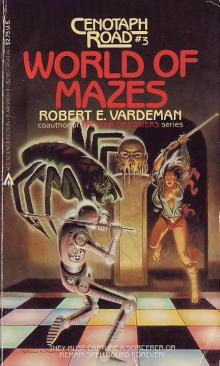 World of Mazes cr-3
World of Mazes cr-3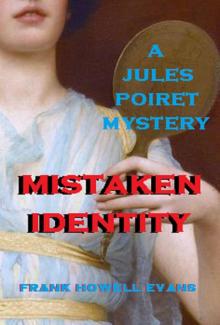 Mistaken Identity (A Jules Poiret Mystery Book 26)
Mistaken Identity (A Jules Poiret Mystery Book 26) Star Trek - DS9 - Fall of Terok Nor
Star Trek - DS9 - Fall of Terok Nor Not Like I'm Jealous or Anything: The Jealousy Book (Ruby Oliver)
Not Like I'm Jealous or Anything: The Jealousy Book (Ruby Oliver) Skaterboy by J. M. Snyder
Skaterboy by J. M. Snyder The Sorcerer_s Skull cr-2
The Sorcerer_s Skull cr-2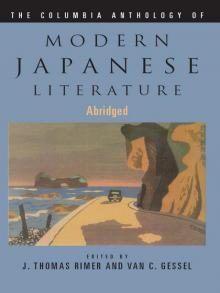 The Columbia Anthology of Modern Japanese Literature (Modern Asian Literature Series)
The Columbia Anthology of Modern Japanese Literature (Modern Asian Literature Series) New Erotica 5
New Erotica 5 Catherine Coulter - FBI 3 The Target
Catherine Coulter - FBI 3 The Target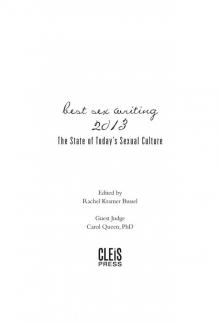 Best Sex Writing 2013: The State of Today's Sexual Culture
Best Sex Writing 2013: The State of Today's Sexual Culture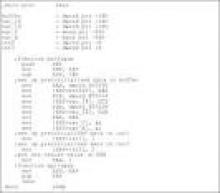 Factoring Humanity
Factoring Humanity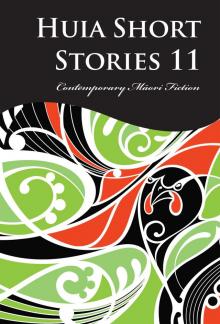 Huia Short Stories 11
Huia Short Stories 11 Call of the Wilds
Call of the Wilds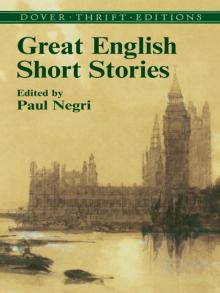 Great English Short Stories (Dover Thrift Editions)
Great English Short Stories (Dover Thrift Editions)![Ramagos, Tonya - Logan's Lessons [Sunset Cowboys 2] (Siren Publishing Classic) Read online](http://i1.bookreadfree.com/i2/04/10/ramagos_tonya_-_logans_lessons_sunset_cowboys_2_siren_publishing_classic_preview.jpg) Ramagos, Tonya - Logan's Lessons [Sunset Cowboys 2] (Siren Publishing Classic)
Ramagos, Tonya - Logan's Lessons [Sunset Cowboys 2] (Siren Publishing Classic)![Morgan, Nicole - Sweet Redemption [Sweet Awakenings 1] (Siren Publishing Allure) Read online](http://i1.bookreadfree.com/i2/04/10/morgan_nicole_-_sweet_redemption_sweet_awakenings_1_siren_publishing_allure_preview.jpg) Morgan, Nicole - Sweet Redemption [Sweet Awakenings 1] (Siren Publishing Allure)
Morgan, Nicole - Sweet Redemption [Sweet Awakenings 1] (Siren Publishing Allure) Warbirds of Mars: Stories of the Fight!
Warbirds of Mars: Stories of the Fight! Original Version of Edited Godwin Stories(lit)
Original Version of Edited Godwin Stories(lit) Where The Hell is Boulevard?
Where The Hell is Boulevard?![Chemical [se]X Read online](http://i1.bookreadfree.com/i2/04/13/chemical_sex_preview.jpg) Chemical [se]X
Chemical [se]X Allison Brennan - See No Evil
Allison Brennan - See No Evil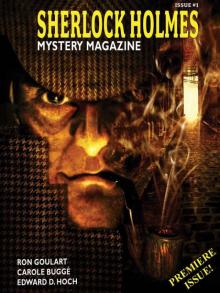 Sherlock Holmes Mystery Magazine #1
Sherlock Holmes Mystery Magazine #1